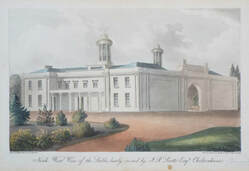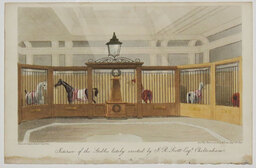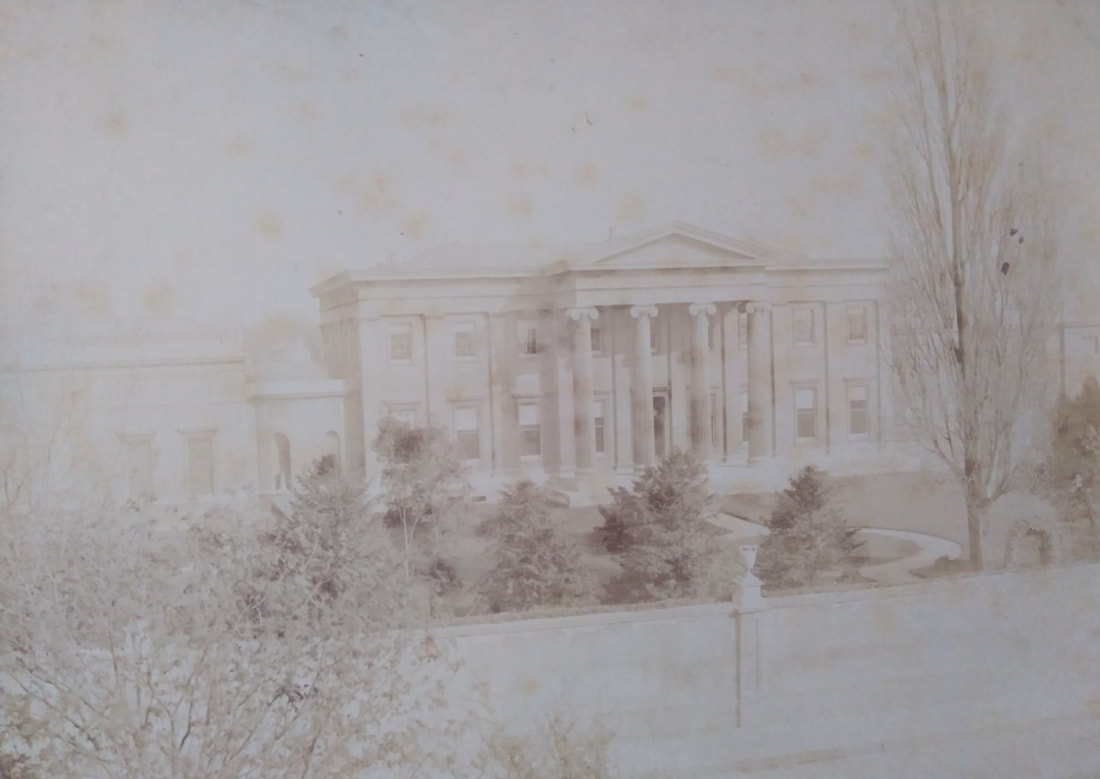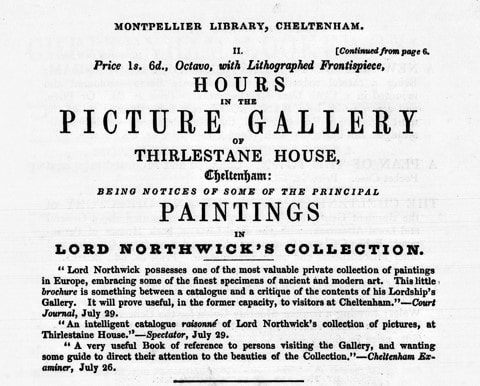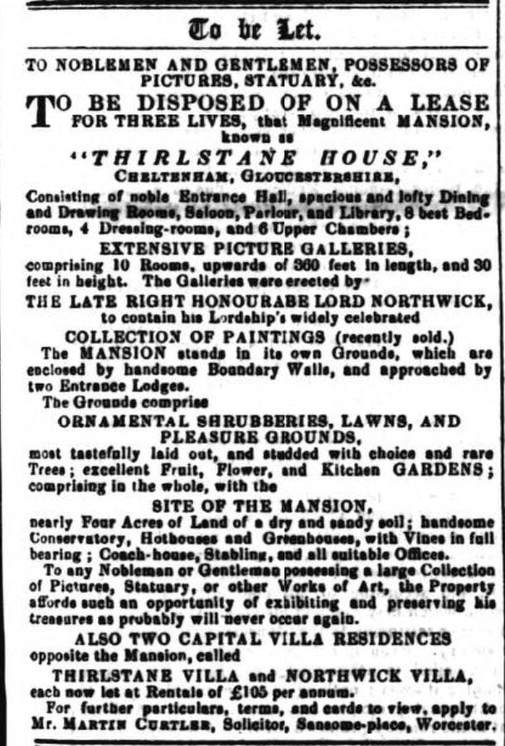Bath Road │80 previous / next │main map / bath road mapThirlestaine HouseThirlestaine House was designed and largely built by James Robert Scott, an amateur architect, between 1820 and 1823 as his private residence. Mr Scott was a younger son of the Reverend Robert Scott, a church minister at Innerleithen, near Peebles, in Scotland. He visited the town on several occasions before deciding to build here, during which time he met and, in 1823, married Harriett Gray, the daughter of Thomas Gray of Cheltenham.
The mansion, which originally consisted only of the central portion, has been described as the most substantial private house ever built in Cheltenham. It is in the Neo-Classical style, the most notable feature being the grand portico with four fluted Ionic columns and a pediment. David Verey, writing in 'The Buildings of England', stated that Scott had brought the Grecian style of architecture to Cheltenham in its most learned style. 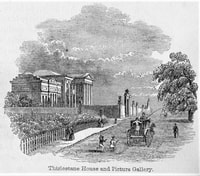 Image courtesy of Neela Mann Image courtesy of Neela Mann
The house was originally approached from two entrances on the Bath Road by means of sweeping carriage drives. As now, it was fronted by a large lawn but also had substantial beds of flower or shrubs, all concealed behind a high brick wall (which was mostly demolished in 1949). There were porter's lodges on each corner of the property to ensure privacy. At the rear of the house was another great block containing stables, offices, a conservatory and a grapery. In addition there was a paddock for the horses, a kitchen garden and a fruit and flower garden.
Although apparently not quite completed, Thirlestaine House came up for sale in February 1831, when it was described as a "splendid freehold mansion", on the outskirts of Cheltenham, having cost Mr Scott the almost unimaginable sum of nearly £100,000. The house was said to have a grand suite of 5 rooms connected by massive double doors and a kitchen and cellars similar to those at the Royal Pavilion in Brighton. Whatever circumstances necessitated the sale, Mrs Harriett Scott died in April of that year, followed 3 weeks later by their 2 year old daughter Izabel and the distress must have been considerable.
The house did not sell at the auction in London in June 1831 and Mr Robins, the auctioneer, was then instructed to sell the property "at any sum" that might be offered. The sale now included all of the silver plate, china and glass, a library of books, the furniture and a "travelling chariot". Further tragedy befell the family in April 1832, when James Robert Scott also died, at his residence in Scotland. He was said by his distraught relatives to have been "in the prime of life". James and Harriett were buried together at his father's church in Innerleithen. Still the house did not sell and it was auctioned again a few years later, in 1836. 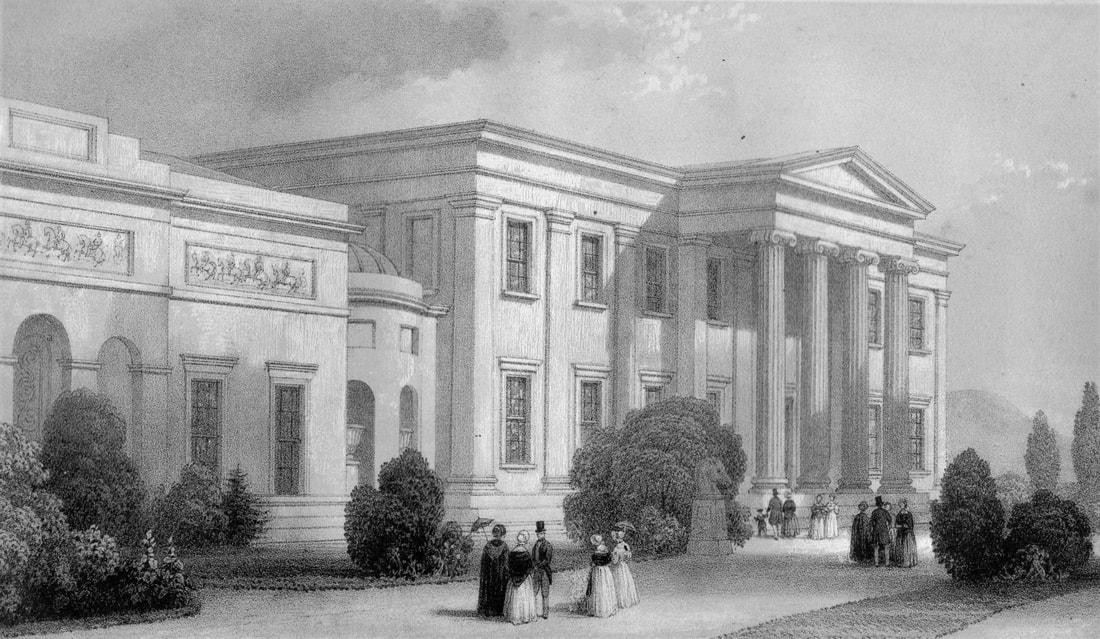 Davies "Stranger's Guide to Cheltenham" (1843). Image courtesy of Neela Mann. Davies "Stranger's Guide to Cheltenham" (1843). Image courtesy of Neela Mann.
It was finally bought in 1838 by John Rushout, 2nd Baron Northwick, the owner of Northwick Park, near Blockley. An avid collector of fine art, as a young man he spent about 11 years on a "Grand Tour" of Europe acquiring pictures. His father died in 1800, requiring him to return to England to manage the family estates, but he continued to expand his collection and was often to be seen at Christie's auction rooms in London. In about 1830 he added a new picture wing to Northwick Park.
Within a few years Northwick's art collection had outgrown even this additional space, so he bought Thirlestaine House as his private art gallery. This also proved to be inadequate to his needs, so he added two wings in the 1840s, making the entire length of the building about 300 feet. The illustration above, from Davies "Stranger's Guide to Cheltenham" (1843), shows only the northern wing extension had been built at that time.
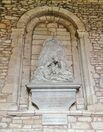 Northwick Memorial Northwick Memorial
The gallery included works by Titian, Leonardo da Vinci, Holbein, Bellini, Botticelli, Rubens and Velasquez and the collection was acknowledged to be one of the finest in Britain. A curator named William Court was employed and, happily, visitors to the house were welcome when Lord Northwick was not in residence. In 1843 the Montpellier Library published a guide to the artworks entitled "Hours in the Picture Gallery of Thirlestaine House, Cheltenham", for 1s 6d. The collection exceeded 1500 works of art.
Lord Northwick died without leaving a will in January 1859 at the age of 89 and is commemorated at Blockley parish church. His huge art collection was then disposed of in a sale that lasted for 21 days and some of his paintings were acquired by the National Gallery in London. Thirlestaine House was advertised to be let in 1861 and was rented for £400 per year in 1863 to Sir Thomas Phillipps, a Governor of the British Museum, to house his enormous collection of books and manuscripts, said to exceed 100,000. He bought the house in 1867 for £12,000 and on his death in 1872 it was inherited by his daughter Katherine, whose descendant Alan Fenwick sold it to Cheltenham College in 1947 for £31,326. However it took more than 100 years to dispose of the book collection.
Researcher: Stuart Manton (Nov 2023) See also the Local Memories page for this property.
|
|
If you have any further information or photographs of this property please let us know via the contacts page.
